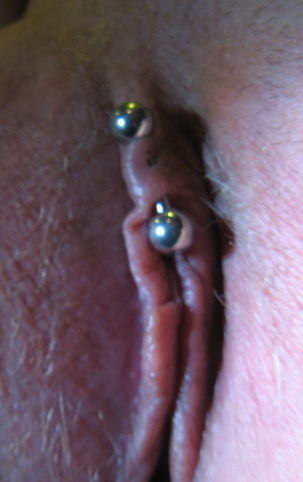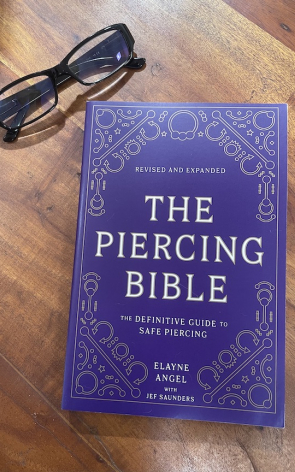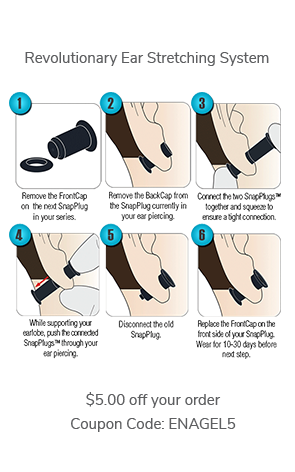I did a consultation for a woman seeking help with her vertical clitoral hood (VCH) piercing.
Hi Elayne I am in urgent need of some help!!! I had a vertical hood piercing done in Australia back in November 2009. I haven't had any problems with it until about 3 wks ago when it sometimes became tender to touch. It's not tender all the time. mainly in the morning after getting out of bed. So i just put it down to abit of twisting or pulling during the night. It was only tender for about 2 weeks then nothing for the last week.
Then this morning i noticed that there seems to be a piece of skin missing on my hood so that i can now see straight through to the barbell (which is a straight 12 gauge bar). There is no discharge or smell and it is not sore to touch at all. I have contacted the piercer who performed the VCH and they seem disinterested in my problem but i am quite worried about it as it doesn't seem normal to me. I did go to a well known, qualified piercer who has her masters degree in piercing. I have attached some photos for you to have a look at and any suggestions you might have on what is happening and what i should do would be greatly appreciated. Cheers
My response:
Hi Sarah,
I'm sorry to have to be the bearer of bad news, but your piercing is rejecting. I'd strongly advise you to remove the jewelry immediately to avoid further tissue damage. There's absolutely nothing that you can do to preserve it at this point.
Here is a brief passage from my book about it:
Dealing with Rejection and Migration
When your jewelry moves closer to the surface or your tissue gets narrower between the openings of a piercing, you are experiencing migration. The piercing may move only a little and then settle and stay in a different position. For safety and longevity, a piercing should have at least 5/16 inch (almost 8 mm) of tissue between the entrance and exit holes. If your piercing is narrower than that, there is a strong possibility you will lose it.
Don’t allow jewelry to come all the way through to the surface or an unsightly split scar will often remain (unless you undergo plastic surgery). Also, future repiercing could be more difficult if you permit the jewelry to be completely expelled from your body.
A body piercing should be abandoned if the tissue between the entry and exit progressively gets smaller or thinner over time and any of the following happen:
• The skin between the openings is flaking and peeling, red and inflamed, or hard and calloused-looking.
• You have less than1/4 inch of tissue between the openings.
• Just a thin filament of nearly transparent tissue is left, and you can virtually see the jewelry right through your skin.
These issues can arise long after you are healed. I know of piercings that were stable for ten to twenty years, and then migration or rejection occurred without any indication as to why. This is especially distressing when it happens to a piercing you’ve had for a long time because it feels like you are losing a part of yourself. Whether your piercing is old or new, if you catch the problem before the point of no return, there are some measures that might help.
I'm also sorry to hear that your piercer has not been helpful; that is very unprofessional. By the way, there's no such thing as a "Master's Degree" in piercing, though some piercers refer to themselves as "Master Piercers" and a few of us have legitimately received the title from our long-time mentors. As defined in my book, The Piercing Bible:
Master Piercer: honorary title earned for expertise, dedication, and contributions to professional piercing bestowed by another Master Piercer
And any so-called "Master Piercer" who is disinterested in the condition of his or her piercings once they are done is not deserving of the title!
So sorry...I'm afraid there is nothing anyone can do to help you. There's a section in my book about repiercing after loss, but I don't think its advice will apply unless you were to somehow recover the lost tissue, which is not possible.
Sincerely,
Elayne





